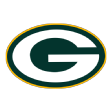KANSAS CITY -- Before ranking the 32 NFL teams by how easily they could unload their starting quarterbacks if they wanted to or needed to make a change, let's applaud the Kansas City Chiefs for showing how it's done.
Andy Reid made it look so easy. Not just Sunday night, when his Chiefs scored touchdowns on five of their first eight drives before letting off the throttle in a 45-10 victory over the AFC North-leading Cincinnati Bengals. Bigger picture, the Chiefs made the whole quarterback acquisition process look like first-and-goal from the 1.
Reid needed a quarterback in 2013 and didn't see one worth drafting early, so he acquired Alex Smith and won as many games over the next five seasons as every team but New England and Seattle. When the Chiefs finally saw a college quarterback they could not resist, they traded up for Patrick Mahomes, sat him behind Smith for a year and then unleashed him to rave reviews this season.
Meanwhile, teams like the New York Giants, Miami Dolphins, Jacksonville Jaguars and the Bengals have stayed the course with average starting quarterbacks who usually haven't been even Smith's equal.
While acting boldly at the position carries risk and Mahomes still must prove himself over time, settling for an average starter is its own gamble.
The Chiefs are not alone. Philadelphia, Minnesota, Houston and to some extent the Redskins all made aggressive moves for quarterbacks in the past few seasons, with generally positive results. Buffalo, Arizona, San Francisco and the New York Jets also made major moves and have a shot at striking it big.
With young quarterbacks such as Jameis Winston, Marcus Mariota and possibly even Derek Carr facing uncertain futures beyond this season, we rank all the teams by how easily they could get seek an upgrade behind center. This is not a ranking of how likely teams are to move on from their starters. Rather, it's a ranking of how easy it would be for each team to make a change if one became desirable or necessary.
The numbers listed below each quarterback's name show the 2019 salary-cap charges their teams would incur for keeping, cutting or trading them, according to ESPN's Roster Management System. Cuts would take place after the season, without taking advantage of the so-called "June 1 rule" allowing teams to push cap charges into the future. Moves sometimes would be made before guarantees kicked in.

1. Jameis Winston, Tampa Bay Buccaneers
Keep: $20,922,000 | Cut: $0 | Trade: $0
While the Buccaneers picked up Winston's fifth-year option for 2019, the $20.9 million salary is not guaranteed unless Winston suffers a serious injury this season.
Tampa Bay could release or trade Winston in the offseason without incurring cash or cap penalties. The team would gain all $20,922,000 in cap space. The Buccaneers also would not have a starting quarterback, but if the organization undergoes big changes in January, it's conceivable that the new regime might seek a fresh start, especially with Winston carrying baggage from his recent three-game suspension.
It has been an adventure since the Buccaneers selected Winston first overall in 2015.
There was Winston against Cleveland in Week 7, facing first-and-10 from the Browns' 36-yard line, deep into overtime, the score tied. A couple of safe completions were all the Buccaneers needed to bolster their already strong win probability. What did Winston do? He took a 12-yard sack on first down. He took a 7-yard sack on second down. He got a 14-yard completion on third-and-29. The Bucs won on a 59-yard kick.
The sequence was a bit like Winston's career: full of promise, diminished by unnecessary drama (and not all his fault).
Teams ideally support their young quarterbacks with a strong defense and ground game. The Buccaneers have not done this for Winston. They've given him excellent receiving weapons, thrown him the keys to the car and asked him to slam down the accelerator in an effort to outscore opponents.
The numbers tell a striking story. Winston's passes have traveled past the first-down marker on 57 percent of attempts, by far the highest rate for any of the 29 quarterbacks with at least 1,000 pass attempts since 2015. Meanwhile, the Bucs have played good defense -- 50th percentile or higher in ESPN's efficiency metric -- in about 35 percent of his starts. That is the lowest rate for any of those 29 QBs and about half the rate for Case Keenum and Russell Wilson.
Winston has played OK for a team that has needed him to play like Drew Brees. Throw in lingering off-field concerns and it's easy to see why Tampa Bay is taking a wait-and-see approach with its franchise quarterback. Winston's contract situation gives it a lot of flexibility.

2. Marcus Mariota, Tennessee Titans
Keep: $20,922,000 | Cut: $0 | Trade: $0
Mariota's 2019 contract is identical to Winston's. The Titans picked up his fifth-year option for the same $20.9 million price. I've listed Mariota below Winston because he carries a higher injury risk, so there's a higher chance, in theory, that his 2019 salary could become fully guaranteed, which would restrict the team's options. Mariota suffered a broken ankle late in the 2016 season. He has been battling an elbow injury this season, missing one game already.
What to make of Mariota in his fourth season? He has 16 touchdown passes with 20 interceptions since the start of 2017.
However, the situation has been less than ideal. Mariota has had three head coaches and three offensive coordinators in four seasons. Two of his offensive coordinators had never called plays in the NFL before the Titans hired them. The third, Terry Robiskie, had been a coordinator from 1989 to '92 and in 2004. The team has also changed owners and general managers during Mariota's tenure.
Had Mariota played better, perhaps the Titans would have enjoyed greater stability. Then again, the general expectation was that Mariota could become a good starting quarterback in the right situation. The expectation was not that he would be another Andrew Luck, able to carry a bad team right from the start.
Now what? The Titans' leadership does not have strong ties to Mariota. Their GM, Jon Robinson, was with Tampa Bay when that organization drafted Winston over Mariota. The Titans' head coach, Mike Vrabel, was with Houston when Mariota was selected second overall. Moving on from Mariota would not necessarily count against Robinson or Vrabel the way it would if both had pushed hard for the team to draft him.

3. Andy Dalton, Cincinnati Bengals
Keep: $16,200,000 | Cut: $0 | Trade: $0
Unloading Dalton and his $16.2 million salary might sound appealing to fans frustrated by the Bengals' playoff struggles. There would be no cap consequences, only cap savings. However, finding a veteran replacement would cost more than Dalton, without necessarily upgrading the position. Last offseason, Sam Bradford and Case Keenum commanded higher salaries than Dalton's $16 million annual average.
In 2014, shortly before Cincinnati entered into its current deal with Dalton, I wrote a column pointing out the downside of paying Tier 1 money for a Tier 2-3 quarterback. This was back when Luck, Russell Wilson and Robert Griffin III had recently led teams to the playoffs on bargain-basement rookie deals that allowed their teams to funnel resources elsewhere on the roster.
It's a great way to go if you can find a rookie quarterback up to the task. It's a good way to go if you can find a rookie quarterback to play about as well as a higher-priced veteran journeyman would play.
Months before the Bengals re-signed Dalton in 2014, they used a fifth-round pick on quarterback A.J. McCarron. They could have selected Teddy Bridgewater or Derek Carr late in the first round that year. They selected cornerback Darqueze Dennard 24th overall, three spots after Cleveland took Johnny Manziel.
It hasn't been a disaster for the Bengals. The deal Dalton signed did not set the market. It was more in line with the pay-as-you-go contract San Francisco gave to Colin Kaepernick at the time. Those were compromise deals.
The market-leading contract Aaron Rodgers signed two months ago averages $33.5 million a year. That is more than double what Dalton's deal averages, allowing the Bengals to get solid QB play at a discount through 2020. The Bengals' history suggests they'll continue staying the course with Dalton, the same as they have stayed the course with coach Marvin Lewis.

4. Dak Prescott, Dallas Cowboys
Keep: $815,848 | Cut: $95,848 | Trade: $95,848
Prescott ranks third in Total QBR since entering the NFL in 2016, among the 33 quarterbacks with at least 500 pass attempts since then. His stats are trending in the wrong direction this season, thanks in part to diminished weaponry.
Prescott becomes eligible for an extension after this season, his third. Because Prescott was not a first-round pick, there is no fifth-year option for the team to exercise after next season. The Cowboys will have to extend Prescott before, during or after the 2019 season, name him their franchise or transition player after the 2019 season, trade him or let him walk.
The Cowboys own the NFL's fifth-best record since drafting Prescott.

5. Eli Manning, New York Giants
Keep: $23,200,000 | Cut: $6,200,000 | Trade: $6,200,000
The quarterback situation for the Giants is less than ideal, obviously, but it could be worse. The team can reap $17 million in 2019 cap savings by parting with Manning. The $6.2 million in dead money is not a killer.
The big savings and relatively small amount of dead money makes this deal easy to abandon from cap and cash standpoints. Manning's poor production over multiple seasons makes the deal easier to exit from an emotional standpoint. Manning ranks 25th in QBR over the past five seasons among the 32 quarterbacks with at least 1,000 pass attempts since then, right below Brock Osweiler and Case Keenum.

6. Ben Roethlisberger, Pittsburgh Steelers
Keep: $23,200,000 | Cut: $6,200,000 | Trade: $6,200,000
Roethlisberger is entering the final year of a deal that will count $23.2 million against the cap if he's on the roster, and $17 million less than that if the team cuts ties. The Steelers will presumably bring back Roethlisberger, but this contract would be easy to escape if the team's plans changed.

7. Case Keenum, Denver Broncos
Keep: $21,000,000 | Cut: $10,000,000 | Trade: $3,000,000
The Broncos had nine touchdown passes with 10 interceptions through seven games last season. They have nine touchdowns with nine interceptions this season. Denver's QBR is somewhat higher than it was in 2017, but it's still well below average and only 29th in the league through the Broncos' Thursday night victory.
This was not what Denver was banking on when it signed Keenum, but the early returns are not shocking, either. Keenum's QBR this season (42.1) is about what it was from 2013-16 (40.6) before his 2017 breakout season (72.8 QBR) with Minnesota. The unfortunate reality for the Broncos is that Brock Osweiler's QBR is higher than Denver's since their split following the 2015 season.

8. Philip Rivers, Los Angeles Chargers
Keep: $23,000,000 | Cut: $7,000,000 | Trade: $7,000,000
Rivers seems to be playing as well as ever, and he's doing it for a team with championship aspirations. His current deal runs through next season, making him a candidate for an extension. If the Chargers did, for some unforeseen reason, decide to move on from Rivers after this season, the team would realize $16 million in savings against the cap, leaving only $7 million on the books. That makes this deal easy to escape from an accounting standpoint. However, as the Chargers try to gain traction in an apathetic Los Angeles market, they need Rivers now as much as ever.

9. Derek Carr, Oakland Raiders
Keep: $22,500,000 | Cut: $7,500,000 | Trade: $7,500,000
It's suddenly not such a stretch to think the Raiders could unload Carr. The fifth-year quarterback has more interceptions (nine) than touchdown passes (eight) this season, and his career stats are not spectacular. An injury to running back Marshawn Lynch will make Carr's job even tougher over the coming months.
If the 2018 season winds up being a disaster for Oakland, will coach Jon Gruden see Carr as the leader he covets to carry the Raiders out of the ruins? In his previous stint with Oakland, Gruden moved on from a talented but underachieving passer (Jeff George) in favor of a grittier leader (Rich Gannon). Carr is not necessarily a great comparison for George, but he might not be a terrible one, either.
The team already traded Khalil Mack, so just about anything seems possible, especially if Carr fails to produce this season.
You won't be surprised to know who leads the NFL in Total QBR since Carr entered the league in 2014. Tom Brady, Matt Ryan, Drew Brees, Aaron Rodgers and Ben Roethlisberger hold the top five spots among the 16 quarterbacks with at least 2,000 pass attempts over that span. You might be surprised to learn Carr ranks 15th on that list, ahead of only Blake Bortles.

10. Russell Wilson, Seattle Seahawks
Keep: $25,286,766 | Cut: $8,286,766 | Trade: $8,286,766
Wilson is heading into the final year of his contract and will be a candidate for an extension or the franchise tag. While moving on from him appears unlikely, the Seahawks do have flexibility if their plans change. Will they draft a quarterback to give themselves a potentially appealing fallback? The team has traded away so many picks that there haven't been many picks left over to take middle- or late-round fliers on quarterbacks.

11. Cam Newton, Carolina Panthers
Keep: $23,200,000 | Cut: $8,500,000 | Trade: $8,500,000
Newton led the Panthers in passing and rushing Sunday as Carolina scored three fourth-quarter touchdowns on drives 65 yards or longer, a first for the team since its big Super Bowl shootout with New England following the 2003 season. The team obviously won't be releasing Newton to save $14.7 million under the cap, but it is deep enough into the deal to have some flexibility if something changes.

12. Jimmy Garoppolo, San Francisco 49ers
Keep: $19,350,000 | Cut: $13,100,000 | Trade: $5,600,000
The 49ers' deal with Garoppolo included a $28 million roster bonus and $37 million cap number for this season. The huge up-front outlay reduced the cap consequences in future seasons, buying the 49ers lots of flexibility if plans change.
Cutting Garoppolo after the deal's first year would actually save the team under the cap. That is a huge contrast from other big quarterback deals.
For example, the Falcons' cap liability for Matt Ryan under terms of their new deal with him would increase by $55 million in 2019 if the team cut him. The Falcons are more committed to the proven Ryan than the 49ers are to the unproven Garoppolo, so it'll be interesting to see how San Francisco proceeds if its quarterback struggles to bounce back from his torn ACL.

13. Tom Brady, New England Patriots
Keep: $27,000,000 | Cut: $12,000,000 | Trade: $12,000,000
Remember those cap-friendly deals Brady signed in the past? His current deal is scheduled to count $27 million against the cap in 2019, more in line with market deals. Cutting or trading Brady would reduce the hit by $15 million, but that clearly isn't the plan for a team that traded away Garoppolo.

14. Andrew Luck, Indianapolis Colts
Keep: $27,525,000 | Cut: $18,800,000 | Trade: $12,800,000
Luck's 20 touchdown passes are a career high through the first seven games of a season. The team is betting big on him to lead it into the future with a roster still in the early stages of a rebuild. If plans change, the Colts do have some flexibility. They are entering the back half of this deal, which means moving on from Luck would save them money under the cap instead of creating bigger cap hits.

15. Blake Bortles, Jacksonville Jaguars
Keep: $21,000,000 | Cut: $16,500,000 | Trade: $10,000,000
The Jaguars benched Bortles for poor performance Sunday, a signal they could be heading in another direction in 2019. The team would save money under the cap by unloading the 2014 first-round selection, but they would still have at least $16.5 million in dead money to count against future caps. That dead money could make it a little more challenging to invest heavily in another player at the position, but where there is a will in the NFL, there is a way for cap managers to make things work.
"I don't think you can bring him back," an exec said Sunday night. "He just gets into slumps where he can't play."

16. Ryan Tannehill, Miami Dolphins
Keep: $26,611,666 | Cut: $13,423,334 | Trade: $13,423,334
The Dolphins are 11-7 over the past three seasons when Tannehill starts, but that is not necessarily a reflection of the quarterback. Tannehill's 44.5 QBR over that span is down from 51.3 for the earlier part of his career. He missed the entire 2017 season to injury, and lasted five starts this season before a shoulder injury sidelined him indefinitely.
Miami converted some of Tannehill's salary to signing bonus to help out its cap for this season, shifting some obligations into the future. Despite that maneuver, the team would still save room under the cap by unloading Tannehill after this season. That gives them some flexibility.

17. Carson Wentz, Philadelphia Eagles
Keep: $8,487,926 | Cut: $8,487,926 | Trade: $4,400,243
Wentz becomes eligible for a long-term extension after this season. The Eagles will presumably be interested in signing him to one. They could take their time if they wanted to, given that 2020 would be Wentz's fifth-year option, and the team could control him with the franchise tag for additional seasons.

18. Jared Goff, Los Angeles Rams
Keep: $8,889,259 | Cut: $8,889,259 | Trade: $4,629,577
Goff's contract situation is about the same as Wentz's contract situation. Both players are producing at a high level for contending teams that are trying to keep championship windows open while their quarterbacks are inexpensive.

19. Deshaun Watson, Houston Texans
Keep: $3.778,495 | Cut: $8,168,739 | Trade: $4,107,994
Watson becomes eligible for a new deal after the 2019 season. Like Wentz, he has gone through an ACL rehab early in his career. Like Wentz, he will presumably be a high priority to re-sign when the time comes.

20. Joe Flacco, Baltimore Ravens
Keep: $26,500,000 | Cut: $16,000,000 | Trade: $16,000,000
Flacco's efficiency has improved this season and Baltimore looks like an AFC contender. How Flacco and the Ravens finish could influence whether the team transitions away from Flacco to Lamar Jackson at the position. Right now, a return for Flacco seems more likely than it did entering the season.

21. Patrick Mahomes, Kansas City Chiefs
Keep: $4,479,808 | Cut: $9,706,251 | Trade: $5,043,076
The other AFC West teams have a combined $66.5 million in 2019 cap space allocated for their quarterbacks, with each team's number above $20 million. Can the Chiefs build up the rest of their team, notably their defense, while allocating so little for Mahomes? They'll have him on the cheap through at least 2019.

22. Drew Brees, New Orleans Saints
Keep: $33,500,000 | Cut: $21,000,000 | Trade: $21,000,000
Brees' deal is scheduled to void after this season, so the $33.5 million charge and projected savings will change if/when the team works out a new deal.

23. Mitchell Trubisky, Chicago Bears
Keep: $7,917,937 | Cut: $17,155,530 | Trade: $9,627,250
Evaluators I spoke with this week thought Trubisky's situation would be an interesting one to monitor next year. Not everyone thinks Trubisky has a bright future and not everyone is convinced Bears coach Matt Nagy will want to bet big on him for the long term.
In the meantime, Trubisky will play on a team-friendly rookie deal that carries annual cap numbers lower than $10 million through 2020. The team will then have a fifth-year option for 2021.

24. Josh Rosen, Arizona Cardinals
Keep: $4,814,326 | Cut: $17,331,573 | Trade: $10,114,383
Former Cardinals coach Bruce Arians used to say it takes eight games to evaluate a quarterback in a new offense. Arizona fired coordinator Mike McCoy after seven games, which means Rosen's early path is looking like Mariota's early path. Both players had new offensive playcallers by the midpoints of their rookie seasons.

25. Josh Allen, Buffalo Bills
Keep: $4,814,326 | Cut: $17,331,573 | Trade: $10,114,383
Allen and the other rookie first-round picks become eligible for new deals after the 2020 season. Releasing them at this stage would trigger immediate cap charges far exceeding the scheduled annual costs if the quarterbacks remain on the roster.

26. Alex Smith, Washington Redskins
Keep: $20,400,000 | Cut: $36,600,000 | Trade: $21,600,000
Releasing or trading Smith will not save the Redskins under the cap until 2020, his age-36 season. The big gains aren't available until 2022, the final year of the deal.

27. Sam Darnold, New York Jets
Keep: $6,874,476 | Cut: $24,784,113 | Trade: $15,058,743
The higher the draft choice, the richer the contract. This deal, like Allen's deal with Buffalo, carries manageable costs on a year-to-year basis. The team would absorb a hefty hit for terminating these deals early on, which is pretty much irrelevant for teams that are all-in on highly drafted starters for years to come.

28. Baker Mayfield, Cleveland Browns
Keep: $7,427,950 | Cut: $26,740,620 | Trade: $16,387,080
Mayfield's deal is a slightly richer version of Darnold's deal. Because the deals are fully guaranteed, there's no cap savings available if a team does want out. That's a tradeoff teams are happy to take in exchange for lower overall costs.

29. Matthew Stafford, Detroit Lions
Keep: $29,500,000 | Cut: $49,000,000 | Trade: $30,000,000
Stafford, 30, is signed through 2022 after reaching agreement on an extension before the 2017 season. He has $19 million fully guaranteed next season and could have another $6 million in guarantees kick in for 2020.
If circumstances change and the Lions want out of the deal, their first comfortable exit point arrives in 2021, when the team could reduce his projected $30 million cap charge to $10 million by cutting ties.
Stafford has 41 touchdowns, 15 interceptions, a 99.2 passer rating and 63.2 QBR since signing his current extension before last season.

30. Kirk Cousins, Minnesota Vikings
Keep: $29,000,000 | Cut: $60,000,000 | Trade: $3,000,000
Wait, didn't the Vikings just enter into a massive deal with Cousins? Yes, they did, and they would incur massive charges to their 2019 cap if they released him, which they obviously are not going to do. However, because Cousins' deal features large guaranteed base salaries without bonuses, the team could trade him without complication, realizing a $26 million gain in cap space.
There is one huge catch, however: Cousins has a no-trade clause in his deal, which means he would have to approve any trade, which basically means Minnesota does not have flexibility here.
A deal counting $29 million against the Vikings' cap in 2019 would count only $3 million if the Vikings traded Cousins after this season. The team acquiring Cousins would have to wedge his fat salaries under its cap. So, yes, divorcing from Cousins would be feasible from an accounting standpoint if the Vikings wanted to trade Cousins, if another team wanted to acquire him and if Cousins himself gave his blessing. It's just unlikely all those planets will align.

31. Aaron Rodgers, Green Bay Packers
Keep: $26,500,000 | Cut: $59,400,000 | Trade: $46,000,000
The four-year, $134 million extension Rodgers signed over the summer would be tough for the Packers to escape until the 2021 or 2022 seasons. Not that they would want to if Rodgers can avoid the injuries that have slowed him recently.

32. Matt Ryan, Atlanta Falcons
Keep: $22,800,000 | Cut: $77,200,000 | Trade: $45,200,000
The exact accounting for Ryan shifts by a couple of million based on how one accounts for a $10 million option payment in 2023. The bottom line is that this deal will be very difficult for the Falcons to escape until the 2021 or 2022 seasons, same as with Rodgers and the Packers. The question is whether Ryan can play well enough for the Falcons to contend while NFC rivals such as the Eagles and Rams pay so much less for quarterbacks who might produce as well or even better.
